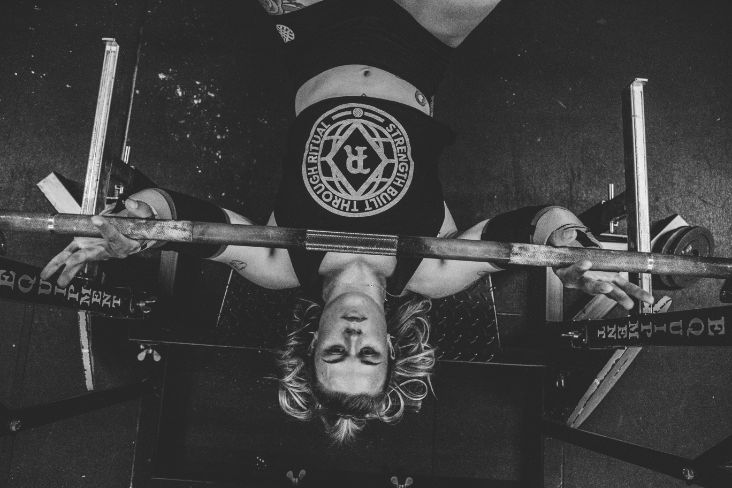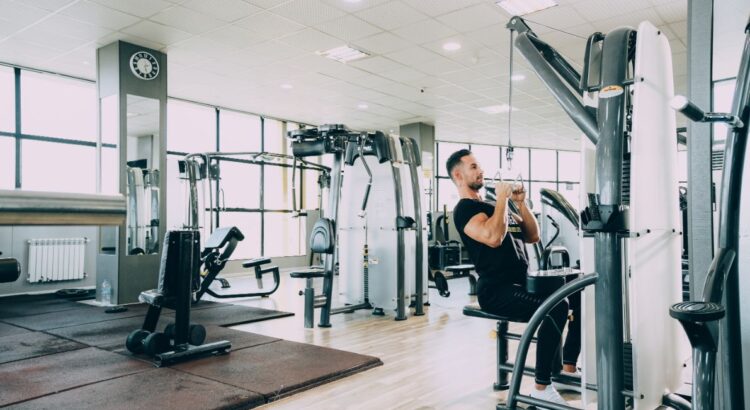For many lifters, improving the bench press can be challenging, but changing the direction of the bar may be a simple way to see some strength gains fairly quickly. Due to the simplicity of its function, bar path is one of the many resistance exercise mechanics that one must be aware of. What is the best bench press barbell path then? Please continue reading for more details.
What Is Bar Path?
Bar path, to put it simply, is the trajectory a barbell follows as it moves through space. It’s the path your barbell takes to get from point “A” to point “B” — from the floor to lockout in the deadlift, from straightened arms to your chest (and back again) in the bench press, and so on.
As an athlete, from time to time you should assess your bar path for the valuable information it provides about your technique. Your bar path can help you identify where inconsistencies in your form may be occurring, which muscles you are working on the hardest, and much more.
What Makes The Bar Path In The Bench Press Important?
Bar path is much more crucial than most beginner exercisers realize, especially when performing the bench press.
An incorrect bar path not only makes the exerciser more dangerous and increases their risk of injury, but it also lowers their total force output potential by putting the musculature in a position where they cannot exert their full strength.
As a result, improving the bench press bar path benefits all exercisers, including those who want to maximize the amount of weight they bench press as well as those who want to ensure they reduce their risk of elbow and shoulder injury by distributing the load equally.
What Are The Drawbacks Of A Sub-optimal Bar Path?
Although a bar path during the bench press is one of the less noticeable and consequential errors made in its performance, there are still several drawbacks associated with this error that can directly impact the exerciser’s total force output and the training stimulus of the exercise.
The most important of these is the exerciser’s failure to maximize the effectiveness of the bench press movement because they are forced to use less total resistance than their muscles require for maximum benefit, occasionally leading to minor muscular imbalances as certain muscle groups are forced to bear more of the load than other muscles.
Due to this unequal load distribution, the shoulder joint may experience significantly more stress and, consequently, a higher risk of injury from a poor or even incorrect bar path, necessitating time off for recovery and further impeding the exerciser’s progress.
Optimizing the bar path so that the strongest muscle groups are recruited to the greatest extent and the range of motion is at its most effective will greatly aid in achieving these goals for strength-based athletes and exercisers who want to increase the total amount of weight they lift during the bench press.
How Should A Proper Bar Path Look?
As the concentric and eccentric phases of each repetition actually differ from one another during the bench press, executing the proper bar path can be a little trickier than with other barbell-based exercises.

The bar path is intended to be moved in a downward curve during the concentric or descending portion of the bench press, starting a little further forward and lowering the bar at an angle until it reaches the necessary bar touch point of contact along the exerciser’s chest.
But when performing the eccentric or ascending part of the bench press, the bar path instead follows a nearly straight upward trajectory up until the triceps brachii are activated, at which point it should ideally start to bend somewhat toward the exerciser’s face, forming a “J”-shaped curve.
Since every exerciser has a unique body composition and biomechanics, the precise bar path for the bench press cannot be determined in advance, but the general idea of how the barbell is supposed to move throughout the exercise is still the same.
Due to the fact that the exerciser is directly beneath the moving barbell, it can be challenging for them to evaluate their own bar path. As a result, there are a number of form cues they can look for to make sure they are using the right bar path during the bench press.
How Can A Bench Presser’s Bar Path Vary From Person To Person?
Because a few factors affect the range of motion, the precise ideal bar path will vary from person to person. Because different people will have different horizontal distances to travel, no two people’s “J” will exactly look the same.
Grip
The bench press’s range of motion will be reduced with a wide grip while it will be increased with a narrower grip.
As a result, a wide grip may produce a more linear or vertical bar path because the force needed to bring the bar back will be less.
The degree of a shift towards your head off the chest would be more pronounced with a narrow grip bench press because it requires a longer horizontal distance to move.
Arm Length
Longer arms have a greater range of motion, whereas shorter arms will have a smaller range of motion. The greater horizontal distance to the lockout position, similar to grip variations, will necessitate stricter adherence to a J bar path for those with longer arms.
This is not to say that lifters with shorter arms don’t also use the same technique, just that it will be used to a lesser extent and appear less obvious.
Arch
A person’s range of motion will be shorter in those with a very high upper back arch than in those with a less pronounced arch.
As with those who have short arms or a wider grip, those who have a high arch will need to press their bar back to the starting position with less overall force.
Focusing on perfecting your bar path will help you shift the weight to your head, which could greatly increase your efficiency if you have trouble forming a large arch.
Read More:
